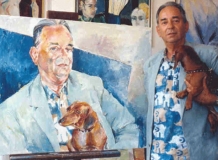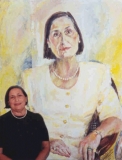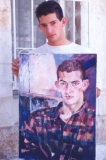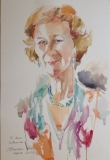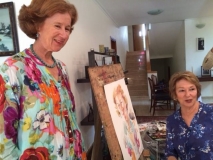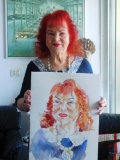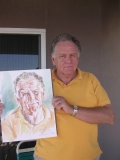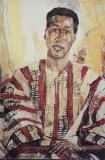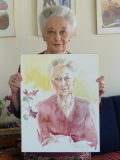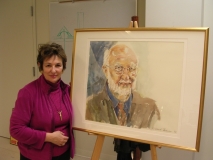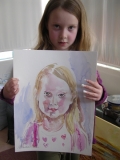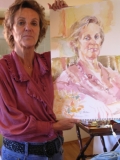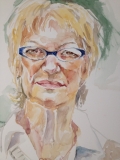I have painted portraits for as long as I have been painting, and find it endlessly fascinating. What are the proportions and minute differences that differentiate one face from others?
The painted portrait has a special status in the family or business world: it has presence, and people tend to attach more weight and importance to it than to a photograph.
Faces are the clue to identity & personality, and I use the features to explore the inner nature of my subjects. As the face is our mask, or calling-card, many people have learned to control their features in order to present to the world a persona that they have chosen. Therefore when I am commissioned to paint a portrait I talk to the person all the while, in order to interpret their real character with insight. There is truth versus flattery. During the long stare at the subject, which often makes them uneasy at first, one really “learns” the face. It is not that important for me to get an exact likeness, although I have no problem doing so. My real aim is to discover the true person and their inner spirit.
Portrait painting requires a deep feeling of empathy for the painted person, understanding the nature and contours of the face, as well as studying their body language. In painting a portrait the play of light as well as the background have an important role. These are part of creating the energetic unity displayed in the technical quality of the painting. In her portrait design Maureen Fain creates an interaction between the viewer and her fascination with the character. Part of this generated dialogue creates the magical dramatic tension factor.
Doron Polak / curator
There is a dialogue – the portrait exists with the sitter’s participation in the artist’s vision. Each gives the other a gift in the confrontation.
Through the features or pose or clothes one can read (encoded) symbols that establish status, ethnicity, idealism, power and fragility.

